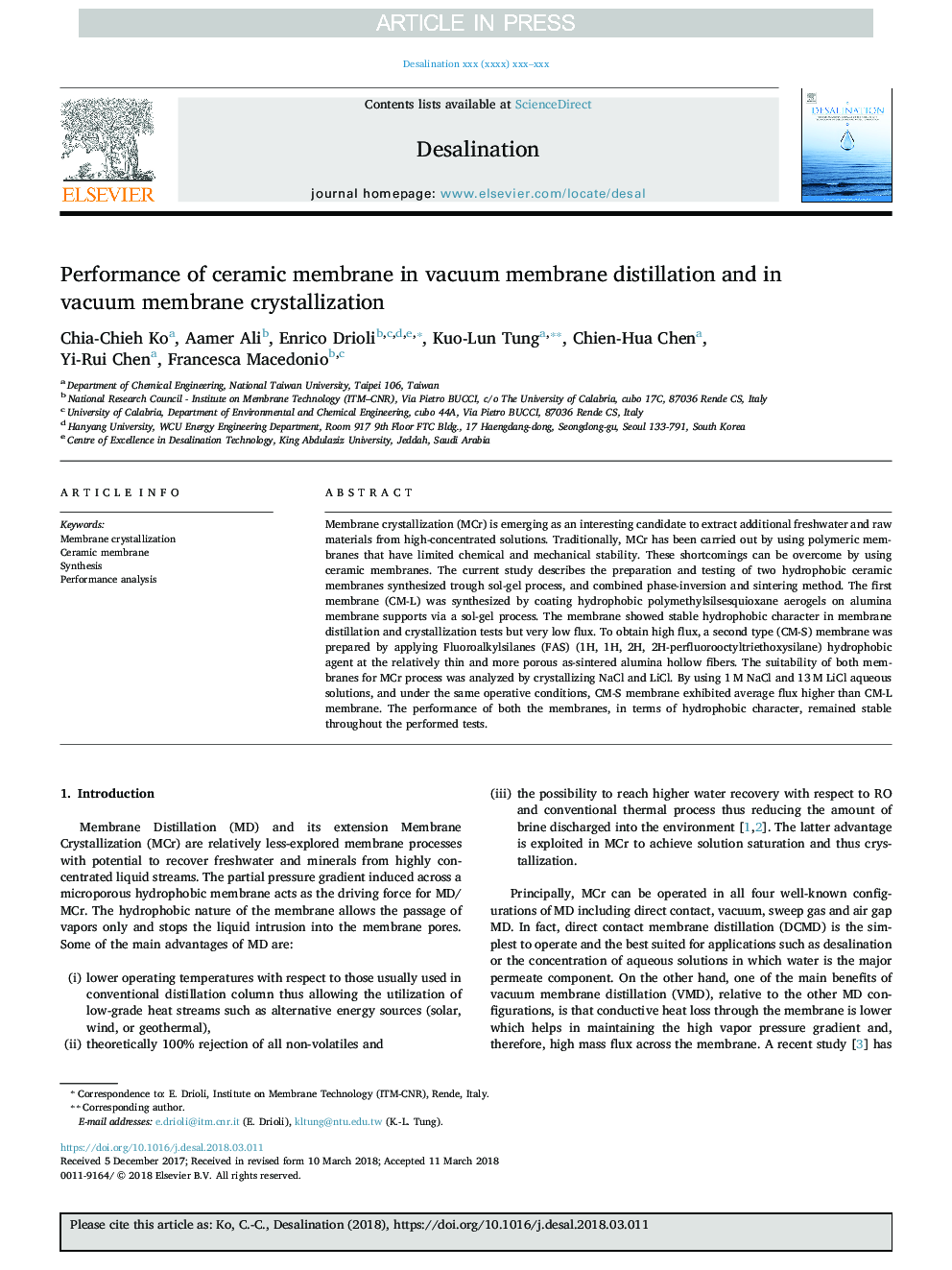| Article ID | Journal | Published Year | Pages | File Type |
|---|---|---|---|---|
| 7007764 | Desalination | 2018 | 11 Pages |
Abstract
Membrane crystallization (MCr) is emerging as an interesting candidate to extract additional freshwater and raw materials from high-concentrated solutions. Traditionally, MCr has been carried out by using polymeric membranes that have limited chemical and mechanical stability. These shortcomings can be overcome by using ceramic membranes. The current study describes the preparation and testing of two hydrophobic ceramic membranes synthesized trough sol-gel process, and combined phase-inversion and sintering method. The first membrane (CM-L) was synthesized by coating hydrophobic polymethylsilsesquioxane aerogels on alumina membrane supports via a sol-gel process. The membrane showed stable hydrophobic character in membrane distillation and crystallization tests but very low flux. To obtain high flux, a second type (CM-S) membrane was prepared by applying Fluoroalkylsilanes (FAS) (1H, 1H, 2H, 2Hâperfluorooctyltriethoxysilane) hydrophobic agent at the relatively thin and more porous as-sintered alumina hollow fibers. The suitability of both membranes for MCr process was analyzed by crystallizing NaCl and LiCl. By using 1â¯M NaCl and 13â¯M LiCl aqueous solutions, and under the same operative conditions, CM-S membrane exhibited average flux higher than CM-L membrane. The performance of both the membranes, in terms of hydrophobic character, remained stable throughout the performed tests.
Related Topics
Physical Sciences and Engineering
Chemical Engineering
Filtration and Separation
Authors
Chia-Chieh Ko, Aamer Ali, Enrico Drioli, Kuo-Lun Tung, Chien-Hua Chen, Yi-Rui Chen, Francesca Macedonio,
